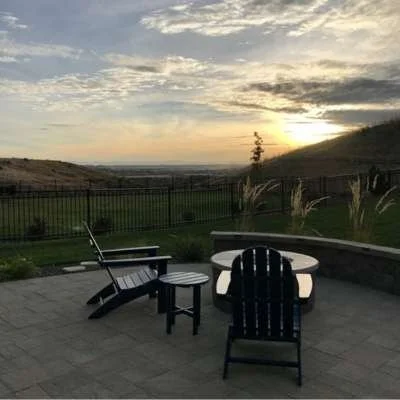Creating the perfect outdoor sanctuary is an art that requires understanding both style and practicality. At Poly Outdoors, we've helped countless Australian homeowners transform their outdoor spaces with our sustainable POLYWOOD® furniture. Today, we're sharing our comprehensive guide to styling our bestselling Adirondack chairs, with special attention to regional considerations across Queensland and New South Wales.
Why POLYWOOD® for Australian Conditions?
"What makes POLYWOOD perfect for Australian conditions is its ability to withstand everything from coastal salt spray to tropical downpours," explains Chris Athanasiou, founder of Poly Outdoors. "Our customers particularly appreciate that these pieces are infinitely recyclable and require minimal maintenance – perfect for our outdoor lifestyle."
Regional Styling Guide:
Southeast Queensland Coastal Areas
Brisbane & Gold Coast:
Position chairs to maximise sea breezes while maintaining shade
Recommended colours: Sand or white for minimal heat absorption
Style tip: "In Brisbane's subtropical climate, create layers of comfort with quick-dry cushions and easily stored throws for unexpected weather changes," advises local designer Emma Thompson
Accessorise with:
Native frangipani or bird of paradise plants
Marine-grade stainless steel side tables
UV-resistant cushions in coastal tones
2. Northern NSW Coastal Regions
Byron Bay & Northern Beaches:
Arrange chairs to capture both sunrise and sunset views
Recommended colours: Sand or one of our brighter colour options for a coastal vibe
Style tip: "For Northern NSW's bohemian coastal style, mix natural textures with your POLYWOOD® pieces," suggests Byron-based stylist Sarah Mitchell.
Accessorise with:
Handwoven jute rugs
Macramé cushion covers
Native coastal rosemary plantings
3. Sydney Metropolitan Area
Eastern Suburbs & North Shore:
Create sophisticated conversation areas
Recommended colours: Classic White or Mahogany for timeless appeal
Style tip: "Sydney's outdoor spaces need to transition seamlessly from day to night entertaining," notes Chris from Poly Outdoors.
Accessorise with:
Smart outdoor lighting
All-weather side tables for entertaining
Geometric planters with structural plants
4. NSW Wine Country
Hunter Valley & Surrounds:
Position chairs to maximise vineyard or garden views
Recommended colours: Teak or Vintage Finish for rustic elegance
Style tip: "In wine country, outdoor furniture should complement the natural landscape while providing comfortable spaces for wine tasting and relaxation."
Accessorise with:
Vintage wine barrel side tables
Australian native gardens
Outdoor wine glass holders
Weather-Specific Styling Tips:
Queensland Summer Solution:
Create movable shade options with market umbrellas
Install outdoor fans for additional cooling
Use light-coloured cushions to reflect heat
Add tropical plants for natural shade
NSW Seasonal Transitions:
Include outdoor heating options for winter evenings
Layer with weather-resistant throws
Create wind-protected nooks
Add versatile lighting for year-round use
Maintenance Tips by Region:
Coastal Areas:
Regular freshwater rinse to prevent salt build-up
Quarterly deep clean
Check and tighten hardware seasonally
Inland Areas:
Dust removal as needed
Protection from UV exposure
Annual maintenance check
Shopping Guide: Visit our Melbourne warehouse for an in-person experience or shop online with Australia-wide delivery. Our customer service team is available at (03) 8288 1799 to help with styling advice and product selection.
Sustainability Focus: "Our POLYWOOD furniture isn't just stylish – it's a sustainable choice that helps reduce plastic waste," explains Chris. "Each piece is infinitely recyclable and built to last, making it perfect for environmentally conscious Australian homes."

